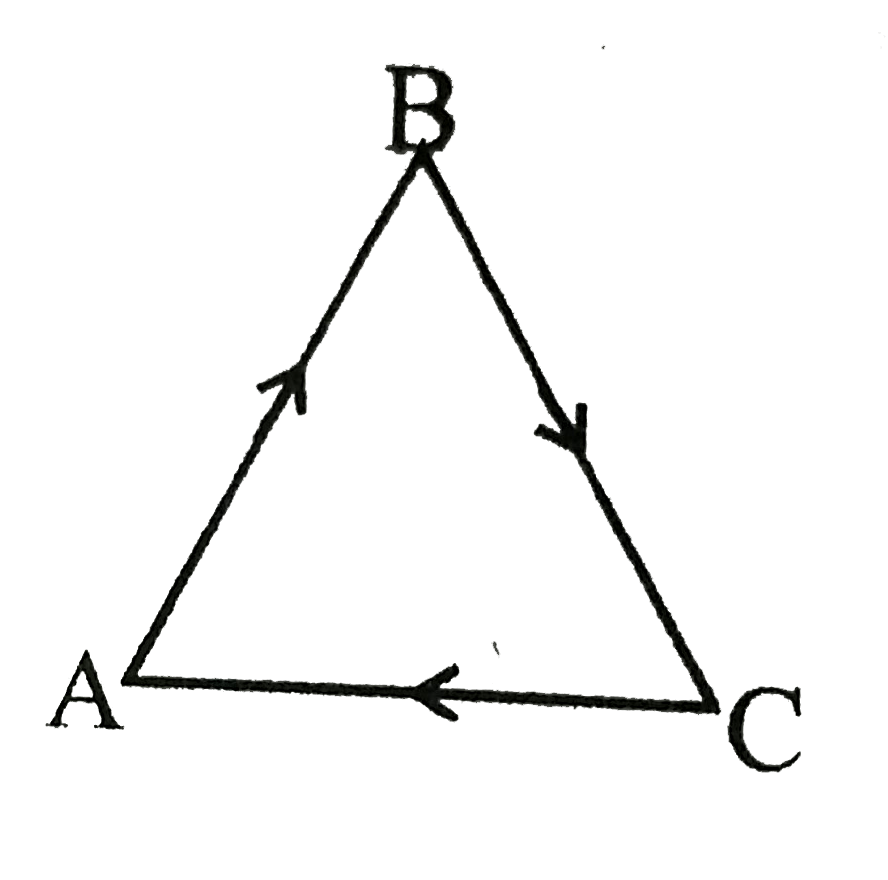ABC is an equilateral triangle. P and Q are two points on ¯¯¯¯¯¯AB and ¯¯¯¯¯¯AC respectively such that ¯¯¯¯¯¯PQ∣∣¯¯¯¯¯¯BC. If ¯¯¯¯¯¯PQ=5cm, then area of ΔAPQ is :
254 sq. cm
25√3 sq. cm
25√34 sq. cm
25√3 sq. cm
The correct Answer is:C
To solve the problem, we need to find the area of triangle APQ given that PQ is parallel to BC and PQ = 5 cm.
1. Understanding the Triangle:
- We have an equilateral triangle ABC where all sides are equal and all angles are 60 degrees.
- Points P and Q are on sides AB and AC respectively such that line segment PQ is parallel to side BC.
2. Properties of Parallel Lines:
- Since PQ is parallel to BC, the angles formed are equal due to the properties of corresponding angles.
- Therefore, angle APQ = angle ABC = 60 degrees and angle AQP = angle ACB = 60 degrees.
3. Identifying Triangle APQ:
- Since angles APQ and AQP are both 60 degrees, triangle APQ is also an equilateral triangle.
4. Finding the Length of Sides of Triangle APQ:
- Given that PQ = 5 cm and since triangle APQ is equilateral, all sides of triangle APQ are equal. Thus, PA = AQ = PQ = 5 cm.
5. Calculating the Area of Triangle APQ:
- The formula for the area of an equilateral triangle with side length 'a' is given by:
Area=√34a2
- Here, a = 5 cm. Therefore, substituting the value:
Area=√34(5)2=√34×25=25√34 cm2
Final Answer:
The area of triangle APQ is 25√34 cm2.
---
- We have an equilateral triangle ABC where all sides are equal and all angles are 60 degrees.
- Points P and Q are on sides AB and AC respectively such that line segment PQ is parallel to side BC.
- Since PQ is parallel to BC, the angles formed are equal due to the properties of corresponding angles.
- Therefore, angle APQ = angle ABC = 60 degrees and angle AQP = angle ACB = 60 degrees.
- Since angles APQ and AQP are both 60 degrees, triangle APQ is also an equilateral triangle.
- Given that PQ = 5 cm and since triangle APQ is equilateral, all sides of triangle APQ are equal. Thus, PA = AQ = PQ = 5 cm.
- The formula for the area of an equilateral triangle with side length 'a' is given by:
Area=√34a2
- Here, a = 5 cm. Therefore, substituting the value:
Area=√34(5)2=√34×25=25√34 cm2
The area of triangle APQ is 25√34 cm2.
Topper's Solved these Questions
- MENSURATIONBOOK - KIRAN PUBLICATIONCHAPTER - MENSURATIONEXERCISE - TYPE - III
21 Videos
- MENSURATIONBOOK - KIRAN PUBLICATIONCHAPTER - MENSURATIONEXERCISE - TYPE - IV
169 Videos
- MENSURATIONBOOK - KIRAN PUBLICATIONCHAPTER - MENSURATIONEXERCISE - Test Yourself
28 Videos
- LCM AND HCF BOOK - KIRAN PUBLICATIONCHAPTER - LCM AND HCF EXERCISE - Test Yourself
18 Videos
- MISCELLANEOUSBOOK - KIRAN PUBLICATIONCHAPTER - MISCELLANEOUSEXERCISE - TYPE-VI
15 Videos
Similar Questions
Knowledge Check
If P is a point on the plane of ΔABC such that ¯¯¯¯¯¯PA+¯¯¯¯¯¯PB+¯¯¯¯¯¯PC=0, then, for Δ ABC, the point P is
AcircumcentreBcentroidCorthocentreDincentreIn △ABC,∠B=90∘, P,Q and R are the mid-points of ¯¯¯¯¯¯AB,¯¯¯¯¯¯BC and ¯¯¯¯¯¯AC respectively. Then which of the following is true?
AA,P,Q and R are concylic points.BB,P,R and Q are concylic points.CC,Q,P and R are concyclic points.DAll of these
ABCD is a parallelogram If M and N are the midpoints of BC and DC respectively,If ¯¯¯¯¯¯¯AM+¯¯¯¯¯¯AN=λ(¯¯¯¯¯¯AC) then value of λ
View SolutionP,Q,R,S have position vectors ¯p,¯q,¯r,¯s respctively such that (¯p−¯q)=2(¯s−¯r) then QS and PR
View SolutionIn triangle ABC,∠C=90∘,AC=6andBC=8. Points D and E are on ¯¯¯¯¯¯ABand¯¯¯¯¯¯BC , respectively, and ∠BED=90∘. If DE=4, then BD=
View SolutionΔABC be an equilateral triangle whose orthocentre is the origin 'O' . If ¯¯¯¯¯¯OA=¯a.¯¯¯¯¯¯OB=¯b then ¯¯¯¯¯¯OC is
View SolutionΔABC be an equilateral triangle whose orthocentre is the origin 'O' . If ¯¯¯¯¯¯OA=¯a.¯¯¯¯¯¯OB=¯b then ¯¯¯¯¯¯OC is
View SolutionWhat is the angle between ?
(i) ¯¯¯¯¯¯ABand¯¯¯¯¯¯AC
(ii) ¯¯¯¯¯¯ABand¯¯¯¯¯¯BC

View Solution
